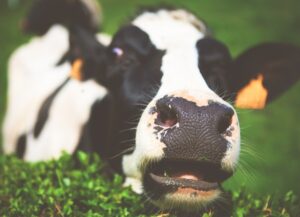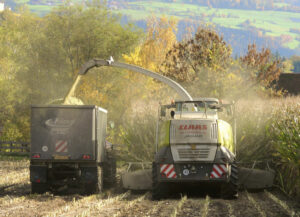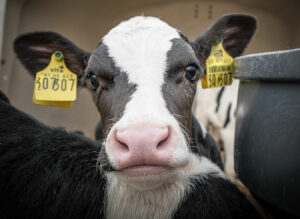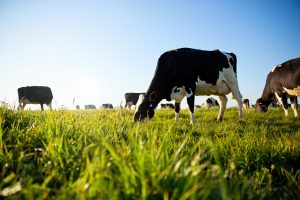Andrés Haro & Fernando Diaz
Among the nutrients required by ruminant animals are trace-minerals such as: iodine (I), cobalt (Co), copper (Cu) and selenium (Se). These minerals are required for several vital functions of the organism, fundamental to optimize dairy cow performance. When deficient they can induce pathologies such as metabolic problems. The uses of boluses for a slow release of some of these minerals in the rumen has recently received greater attention by dairy farmers.
Trace-mineral boluses use in replacement heifers for example, is a practical mineral delivery method, while saving time and avoiding waste. One single bolus can correct mineral deficits, by guaranteeing a daily supplementation. A recent study on 9 dairy farms conducted in the United Kingdom (Atkins et al., 2020) evaluated the effects of a ruminal trace -mineral bolus on the mineral status and performance of replacement heifers. All animals were grazing during winter ether kale, fodder beet or pasture predominantly composed of perennial ryegrass pasture.
Trace-mineral boluses were assigned to 360 Friesian and Jersey crosses heifers, either: supplemented (two reticulorumen trace-mineral boluses, S-MB) or un-supplemented (U-MB) with trace-mineral boluses. The boluses contained: 13.4, 0.5, 0.15 and 1.0 g of Cu, Co, Se (sodium selenite) and I (calcium iodate), respectively.
Samples of the forage crops and supplementary forage were collected for chemical composition, in addition, yields of crops and pastures were also measured. Body weight, body condition score and coat length were recorded; blood samples were collected for hematological and plasma analysis.
Forage crops, supplementary fodder, and total diet had similar DM and proteian contents. The fiber concentration on the other hand, was lower (17.9% NDF) in fodder beet and higher in pasture (52.1%). Concentrations of P and K were similar in all three feeds; Kale however, had higher Ca concentration (1.5%). Kale also had higher concentrations of S than fodder beet (0.58 y 0.05%, respectively). Lower concentrations of Na and Mg (0.07 y 0.16%, respectively) were observed in pasture compared to fodder beet (0.47 y 0.25%, respectively).
Pasture had a higher concentration of Co, Cu, Fe and Mo than kale and fodder beet. No differences were observed in the concentrations of Se, I and Zn in forage crops, supplementary fodder or the total diet. Supplementation with trace-mineral boluses increased plasma concentrations of Co, Se and Cu (average value: 0.041, 0.82 and 14.5 μmol/L, respectively), compared to the U-MB group (average value: 0.021, 0.50 and 11.3 μmol/L, respectively). In addition, plasma concentrations of Mn did not differ between the two S-MB and U-MB groups.
Vitamin B12 concentrations were higher in S-MB heifers than U-MB (128 and 116 pmol/L, respectively) in the groups that received forage crops and the total diet. S-MB heifers had a higher concentration of superoxide dismutase and glutathione peroxidase in blood (S-MB and U-MB; 2338 and 2067 U/gHb and 76 and 30 U/mL of hematocrit, respectively). Supplementation with trace-mineral boluses did not affect serum concentration of β-hydroxybutyrate and urea, in either group. Similarly, bolus supplementation had no effect on blood hematology or white blood cells, hemoglobin, red blood cells, hematocrit and blood platelet count.
Average daily gains, body weights, body condition scores and the coat length were not affected by trace-mineral boluses (average value: 245 g/d, 415 kg, 2.57 and 23.2 mm, respectively) compared to the U-MB (average value: 245 g/d, 415 kg, 2.57 and 23.4 mm, respectively).
Supplementing with trace-mineral boluses in replacement heifers showed no effect on animal performance, with the exception of body condition prior to calving slightly higher in supplemented heifers. Mineral bolus supplementation increased plasma concentrations of these minerals except for Cu in heifers fed grass or fodder beet. Blood metabolite and hematology suggested the bolus was effective at lessening the anti-kale nutritional factors. According to the results obtained in this study the authors recommended the use of trace-mineral boluses in pregnant heifers during the winter, particularly with kale feeding.
Reference
Atkins, N.E., Bleach, E.C.L., Mackenzie, A.M., Hargreaves, P.R., Sinclair, L.A. 2020. Mineral status, metabolism and performance of dairy heifers receiving a combined trace element bolus and out-wintered on perennial ryegrass, kale or fodder beet. Livestock Science. 231: 103865.
© 2020 Dairy Knowledge Center. All Rights Reserved.











